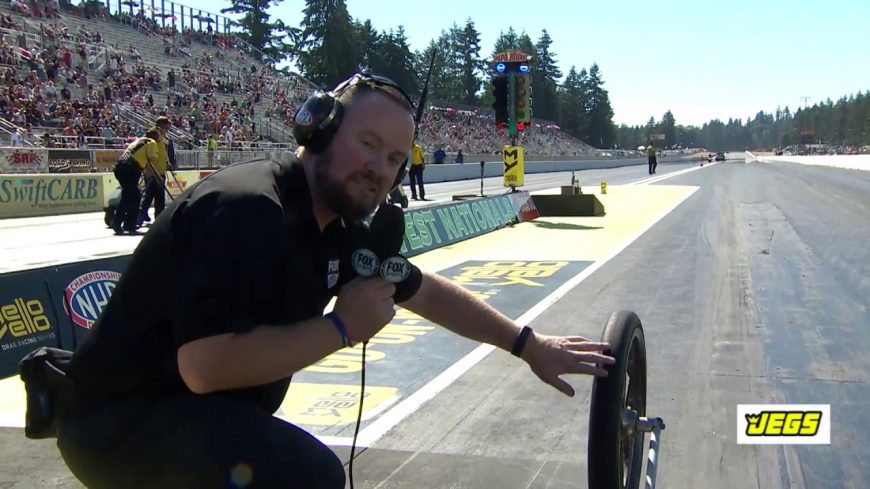Staging A Drag Car Explained With Brian Lohnes.

To the casual fan and even a hobby-level drag racer, staging a drag car doesn’t seem like that big a deal. You roll up, you light the prestage light, then you roll a little farther in and light the stage light. For many, that’s about all the thought the process requires.
For hardcore drag racers, though, the staging process is infinitely more precise than that. From Top Fuel and Funny Car down to sportsman classes and bracket racing, staging a car is quite literally one of the most important processes of each and every pass down the track.
For heads up classes where every ounce of ET matters and tens of thousandths of a second can decide the outcome of any given race, drivers want to stage as shallow as possible in most cases. This gives the car a little more room to get a rolling start before the front tire actually leaves the starting line beams and the ET clocks start counting. As my good friend Brian Lohnes mentions in this quick walk through of the staging process, this can cause the driver’s reaction time to suffer, but if he or she is trying to get low qualifier or set a world record – reaction time being a non-factor in either situation – then the driver will choose to stage as shallow as possible.
If the driver is striving to put up a quicker reaction time on race day, however, they’ll want to bump in a little deeper, putting the car closer to the point of leaving the line, and a few inches closer to the finish line. Both of these factor into the overall run and can be the difference in an otherwise dead-heat drag race. The elapsed time may suffer a few thousandths, perhaps even a hundredth or so, but on race day it’s all about getting to the stripe first.
Thanks as always to Brian Lohnes and the NRHA team for sharing these videos with us to help everybody learn about the sport we all love so much.

